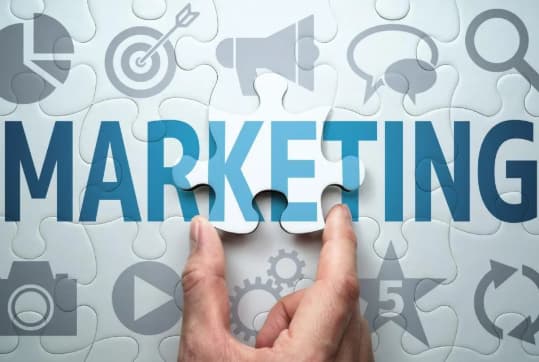Launching a startup is always a risk, but it’s also a chance for innovation. However, even the most unique ideas can be overshadowed by competitors if the right marketing strategy is not in place. It is important not only to attract the attention of the target audience, but also to retain it by building long-term relationships. In this article, we will look at the top 10 marketing strategies that can help startups successfully enter the market and achieve sustainable growth.
1. Content marketing: Building trust through useful content
Content marketing allows you to capture your audience’s attention and establish trust. A well-designed strategy not only builds brand awareness, but also contributes to a startup’s reputation. Here are the key elements that can form the basis of successful content marketing:
- Blogs and articles – writing informative and useful content that addresses relevant problems of your target audience, improving SEO positions and driving additional traffic to your site.
- Video content – creating engaging and educational videos that can grab users’ attention and go viral, spreading the word about your brand through social media and video platforms.
- Podcasts offer an opportunity to create a more personal and meaningful connection with your audience, while also enhancing your ability to engage with potential customers.
2. SEO-optimization: Attracting traffic without advertising costs
SEO optimization helps startups boost their search engine visibility, driving consistent organic traffic to their website. It’s one of the most cost-effective ways to attract an audience without relying on paid ads. Key elements of SEO optimization include:
- Perpetuate organic traffic – creating high-quality content and optimizing your site for search engines, resulting in a steady increase in traffic at no additional cost.
- Attract a more targeted audience – focusing on the key queries and needs of your target audience helps attract exactly the users who are most likely to be interested in your product or service.
- Reduce the cost of paid advertising in the future – SEO, unlike paid advertising, requires investment only at the initial stage, further ensuring long-term growth of traffic without constant advertising costs.
3. SMM: Using social media for engagement and communication
Social media offers startups a valuable platform to connect with their target audience, strengthen their brand, and boost sales. It’s a dynamic channel that enables not just product promotion, but also relationship-building with both potential and existing customers. Key SMM strategies for startups include:
- Regular publications – create content that is interesting to your audience, helps build trust and maintain interest in the brand. Publications should be diverse: from educational to entertaining content.
- Run targeted ad campaigns — by refining social media advertising, you can focus on the audience most likely to engage with your product, based on their demographics and interests.
- Engage with followers – proactive commenting, private messaging and contests help increase engagement and strengthen customer relationships by showing attention to each user.
4. Influencer Marketing: Advertising through influencers
Influencer marketing is a strategy that enables startups to tap into the trust and authority of well-known figures to boost their brand visibility. Collaborating with influencers can significantly speed up the process of gaining trust from your target audience and raise awareness of your product. Here are the key advantages and strategies:
- Increase brand awareness – Influencers have a large audience, and recommending them can greatly accelerate brand awareness, especially if they share your product’s values.
- Attracting new audiences – collaborating with influencers allows you to reach new, untapped audience segments and increase subscribers and customers through the trust of their fans.
- Establishing trust in a product or service — when a well-known figure endorses a product, their followers are more inclined to trust that it’s genuinely valuable. This is particularly effective if the influencer already holds credibility with your target audience, boosting the chances of a successful promotion.
5. Partner programs and referral schemes
Affiliate programs and referral schemes are some of the most effective ways for startups to drive sales by expanding their reach without spending a lot of money on advertising. These strategies not only help in attracting new customers but also in building a loyal network of partners, which helps in long-term business growth. Important aspects:
- Attract new customers through referrals – affiliates share links to your product, helping you reach new audiences and grow your customer base.
- Develop a network of loyal partners – affiliate programs help build long-term relationships with people interested in promoting your brand, which contributes to a steady stream of sales.
- Encourage current users to promote your product — offering rewards and bonuses for referring new customers motivates users to actively share your startup with others.
6. E-mail marketing: Personal communication with every customer
Email marketing continues to be one of the most effective tools for fostering personalized, long-term relationships with customers. It enables you to not only keep users informed about new products but also strengthen your connection with each subscriber. Essential components of a successful email marketing strategy include:
- Personalized emails – sending customized offers or reminders that take into account the recipient’s interests and behavior.
- Automation – setting up automated emails that are sent based on user actions, which helps maintain engagement without additional effort.
- Retargeting – reminders to users who have not completed a purchase or other action, which helps increase conversion.
7. Loyalty programs: Customer retention through bonuses and discounts
Loyalty programs are a powerful tool for retaining customers and driving repeat business. Offering bonuses and discounts fosters brand loyalty, which is crucial for the sustained growth of a startup. Key advantages include:
- Incentivize repeat purchases – bonuses and cumulative discounts motivate customers to return and make new purchases.
- Encouraging recommendations and referrals – loyalty programs can include bonuses for referring new customers, which helps to expand the base.
- Fostering long-term relationships — continuous rewards and special offers strengthen brand loyalty and cultivate a dedicated audience.

8. Loyalty programs: Customer retention through bonuses and discounts
Loyalty programs are a great tool for retaining customers and increasing their value to the business. Providing bonuses and discounts helps not only to maintain interest in the brand, but also to build long-term relationships. Important aspects:
- Incentivizing repeat purchases – bonuses and discounts motivate customers to come back and make new purchases.
- Encouraging recommendations and referrals – loyalty programs can reward customers for referring new ones, which helps expand the base.
- Building long-term relationships – regular promotions and exclusive offers reinforce brand commitment, creating a loyal audience.
9. Webinars and online seminars: Audience education and engagement
Webinars and online seminars are effective tools for startups to help not only communicate the value of a product, but also create a loyal and engaged audience. Benefits include:
- Target audience education – hosting educational sessions helps explain how your product or service solves problems and meets customer needs.
- Interactivity – being able to interact with participants in real time, answer questions and discuss relevant topics builds brand trust.
- Long-term engagement – users can return for new webinars, which helps build a loyal audience and maintain interest in the product.
10. Gamification: Make the buying process interesting and engaging
Gamification is a way to engage the audience and make the interaction with the product more fun. The use of gamified elements helps startups not only attract attention but also increase customer engagement. Key elements of gamification:
- Gamification elements – introducing bonuses, achievement rewards and contests helps to retain customer interest and encourage them to engage further with the brand.
- Promotional games and sweepstakes – providing games and sweepstakes for users increases engagement and draws additional attention to the product or service.
- Activity rewards – providing rewards for participating in promotions or activity on the platform encourages customers to return and actively use the product.

